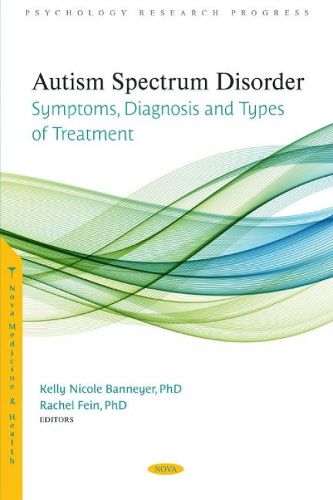Readings Newsletter
Become a Readings Member to make your shopping experience even easier.
Sign in or sign up for free!
You’re not far away from qualifying for FREE standard shipping within Australia
You’ve qualified for FREE standard shipping within Australia
The cart is loading…






While this book is not intended to serve as a how-to manual for providing assessment and intervention for individuals with autism spectrum disorder (ASD), it should serve as an informational source and guide of evidence-based practice. The first six chapters of this text discuss assessment, including common characteristics and presentations of an ASD diagnosis (Chapter 1), common co-occurring conditions (Chapter 2), factors associated with ASD (Chapter 3), evidence-based assessment in clinical settings (Chapter 4), and best practices for assessment in school settings (Chapter 5). The second part of this book focuses on various forms of intervention, including behavioural intervention with an emphasis on applied behavioural analysis (Chapter 6), an overview of treatments for core symptoms of ASD (Chapter 7), the use of cognitive behavioural therapy for autistic individuals (Chapter 8), treatment for severe maladaptive behaviours including feeding difficulties and aggression (Chapter 9), school-based modifications and interventions (Chapter 10), and pharmacological interventions (Chapter 11). Since ASD is a diagnosis usually given in childhood and early intervention is important, the majority of the content in this book is focused on and comes from research from children. However, several chapters allude to research based on autistic adults, and Chapter 12 focuses on important considerations when providing intervention to adolescents and young adults.
$9.00 standard shipping within Australia
FREE standard shipping within Australia for orders over $100.00
Express & International shipping calculated at checkout
While this book is not intended to serve as a how-to manual for providing assessment and intervention for individuals with autism spectrum disorder (ASD), it should serve as an informational source and guide of evidence-based practice. The first six chapters of this text discuss assessment, including common characteristics and presentations of an ASD diagnosis (Chapter 1), common co-occurring conditions (Chapter 2), factors associated with ASD (Chapter 3), evidence-based assessment in clinical settings (Chapter 4), and best practices for assessment in school settings (Chapter 5). The second part of this book focuses on various forms of intervention, including behavioural intervention with an emphasis on applied behavioural analysis (Chapter 6), an overview of treatments for core symptoms of ASD (Chapter 7), the use of cognitive behavioural therapy for autistic individuals (Chapter 8), treatment for severe maladaptive behaviours including feeding difficulties and aggression (Chapter 9), school-based modifications and interventions (Chapter 10), and pharmacological interventions (Chapter 11). Since ASD is a diagnosis usually given in childhood and early intervention is important, the majority of the content in this book is focused on and comes from research from children. However, several chapters allude to research based on autistic adults, and Chapter 12 focuses on important considerations when providing intervention to adolescents and young adults.